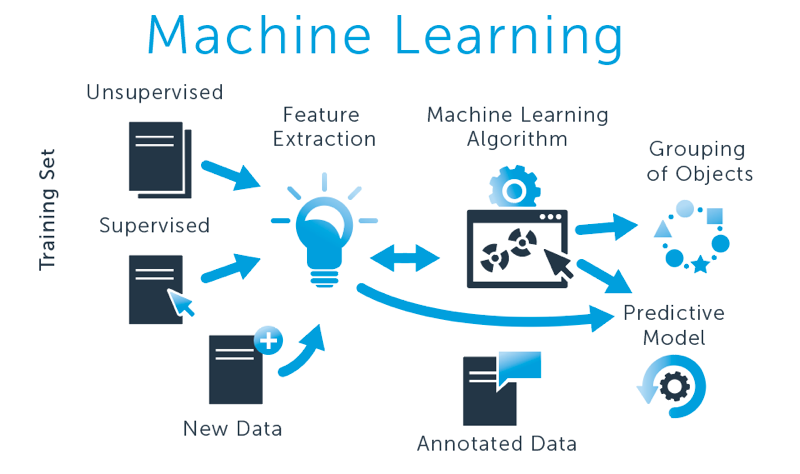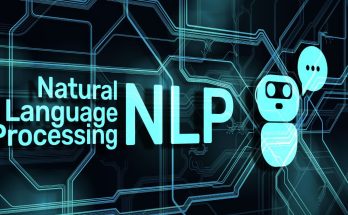Basics for Machine Learning: Understanding
Welcome to the exciting world of machine learning, where algorithms and data come together to revolutionize how we solve complex problems and make decisions. Whether you’re a newcomer intrigued by AI or a seasoned professional looking to deepen your understanding, this blog post will guide you through the basics for machine learning in an accessible and engaging way. So, buckle up and get ready to unravel the mysteries behind this cutting-edge technology!

Understanding Machine Learning
Machine learning is a branch of artificial intelligence that focuses on developing algorithms capable of learning and improving from data without being explicitly programmed. It enables computers to identify patterns, make decisions, and predictions based on the information provided.
One key concept in machine learning is training models using datasets to improve their performance over time. These models can be trained using various techniques like supervised, unsupervised, or reinforcement learning.
Supervised learning involves providing labeled data for the algorithm to learn from, while unsupervised learning deals with discovering patterns in unlabeled data. Reinforcement learning revolves around teaching agents to take actions within an environment to achieve specific goals through trial and error.
Understanding these fundamental principles sets the foundation for delving deeper into the diverse world of machine learning applications and possibilities.
Types of Machine Learning Algorithms
When diving into the world of machine learning, it’s crucial to understand the various types of algorithms that drive this innovative technology.
Supervised learning algorithms involve training a model on labeled data to predict outcomes accurately. This type is common in tasks like regression and classification.
On the other hand, unsupervised learning algorithms work with unlabeled data to find patterns or groupings within the dataset without specific guidance.
Reinforcement learning takes a different approach by allowing models to learn through trial and error interactions with an environment, receiving feedback based on their actions.
Furthermore, there are semi-supervised and self-supervised learning algorithms that combine elements of both supervised and unsupervised approaches for more nuanced tasks. Each type serves a unique purpose in solving diverse real-world problems efficiently.
Data Preparation for Machine Learning
Data preparation is a crucial step in the machine learning process. Before diving into building models, it’s essential to ensure your data is clean and structured properly. This involves tasks like handling missing values, dealing with outliers, and encoding categorical variables.
One key aspect of data preparation is feature engineering. This involves creating new features or transforming existing ones to improve model performance. It can include techniques like normalization, scaling, and dimensionality reduction.
Another important consideration is splitting your data into training and testing sets. The training set is used to build the model, while the testing set evaluates its performance on unseen data.
Data preprocessing also includes tasks like standardization and normalization to ensure all features are on a similar scale for accurate model training.
Proper data preparation sets the foundation for successful machine learning models by ensuring that they are trained on high-quality, reliable data.
Choosing the Right Programming Language for Machine Learning
Choosing the right programming language for machine learning is crucial as it can significantly impact the success of your projects. Each language has its strengths and weaknesses, so it’s essential to understand your specific needs before making a decision.
Python is a popular choice among data scientists and machine learning engineers due to its readability, extensive libraries like NumPy and pandas, and vibrant community support. R is another powerful language known for its statistical analysis capabilities and robust visualization tools.
If you prefer performance optimization, languages like C++ or Java might be more suitable for handling large datasets efficiently. Meanwhile, if you’re focused on deep learning projects, TensorFlow and PyTorch offer excellent support with their dedicated frameworks.
The best programming language for machine learning will depend on factors such as project requirements, personal preference, and existing expertise. Experimenting with different languages can help you determine which one aligns best with your goals.
Popular Tools and Frameworks for Machine Learning
When diving into the world of machine learning, having the right tools and frameworks can make all the difference in your projects. Popular tools like Python with libraries such as Scikit-Learn and TensorFlow have become go-to choices for many data scientists. Python’s simplicity and extensive community support make it a favorite among beginners and experts alike.
Another widely used framework is R, known for its statistical analysis capabilities. R provides a wide range of packages specifically designed for machine learning tasks, making it a powerful tool in the field. For those looking to work with neural networks, Keras is a high-level deep learning framework that simplifies the process of building and training models.
On top of these, platforms like Google Cloud ML Engine and Amazon SageMaker offer scalable solutions for deploying machine learning models in production environments seamlessly. Experimenting with different tools and frameworks is key to finding what works best for your specific needs and projects within the dynamic realm of machine learning.
Real-Life Applications of Machine Learning
Real-Life Applications of Machine Learning are truly fascinating and diverse. One prominent example is in healthcare, where machine learning algorithms analyze medical data to assist in diagnosing diseases and predicting patient outcomes. These technologies have the potential to revolutionize personalized medicine by tailoring treatments to individual patients based on their unique characteristics.
In the field of finance, machine learning is used for fraud detection, algorithmic trading, and risk management. By analyzing vast amounts of financial data in real-time, these systems can identify patterns that humans might miss, leading to more efficient decision-making processes.
Another exciting application is in self-driving cars, where machine learning algorithms process sensor data to navigate roads safely and predict the behavior of other vehicles. This technology has the potential to reduce accidents and improve transportation efficiency in the future.
Moreover, e-commerce platforms use machine learning for recommendation engines that suggest products based on a user’s browsing history and preferences. This enhances customer experience by providing personalized recommendations tailored to each individual shopper’s interests and needs.
Challenges and Limitations of Machine Learning
Machine learning, despite its potential, faces various challenges and limitations that can impact its effectiveness. One of the main challenges is the quality and quantity of data – machine learning algorithms are only as good as the data they are trained on.
Another significant limitation is the interpretability of models; complex algorithms like deep learning neural networks often lack transparency, making it challenging to understand how decisions are reached. This can be a barrier in industries where clear explanations are required for regulatory purposes.
Additionally, issues like overfitting or underfitting models can arise if not properly addressed during training. Balancing model complexity with generalization capability is crucial to avoid these pitfalls. Moreover, privacy concerns related to sensitive data handling raise ethical dilemmas that need careful consideration.
Despite these challenges and limitations, continuous advancements in technology aim to address these issues and improve the overall efficiency and reliability of machine learning systems.
The Future of Machine Learning
The future of machine learning holds boundless possibilities. As technology continues to advance at a rapid pace, so too will the capabilities of machine learning algorithms. It’s not hard to imagine a world where autonomous vehicles are the norm, healthcare is personalized on an unprecedented level, and businesses make smarter decisions with predictive analytics.
With the increasing amount of data being generated every day, machine learning will play a crucial role in extracting valuable insights from this vast sea of information. The integration of artificial intelligence into various industries will revolutionize how we work, communicate, and live our daily lives.
As researchers delve deeper into areas like deep learning and neural networks, we can expect even more sophisticated models that mimic human cognitive functions. This evolution will lead to machines becoming more adept at tasks that were once thought to be exclusive to humans.
In essence, the future of machine learning is bright and full of potential for transformative change across all aspects of society.
Conclusion
In this article, we have covered the basics for machine learning, including different types of algorithms, data preparation techniques, programming languages to use, popular tools and frameworks available, real-life applications, challenges faced in implementation, and future prospects.
Machine learning has revolutionized various industries like healthcare, finance, marketing by enabling predictive analysis and automation. As technology advances further and more data becomes available, the potential for machine learning is limitless.
It is essential for businesses to understand the fundamentals of machine learning to stay competitive in today’s digital world. By incorporating machine learning into their operations effectively with a well-thought-out strategy and proper resources allocation can lead to significant growth opportunities.
As you delve deeper into the realm of machine learning or consider implementing it within your organization remember that continuous learning and adaptation are key to harnessing its full potential. Stay curious and explore new possibilities as they arise in this ever-evolving field.



